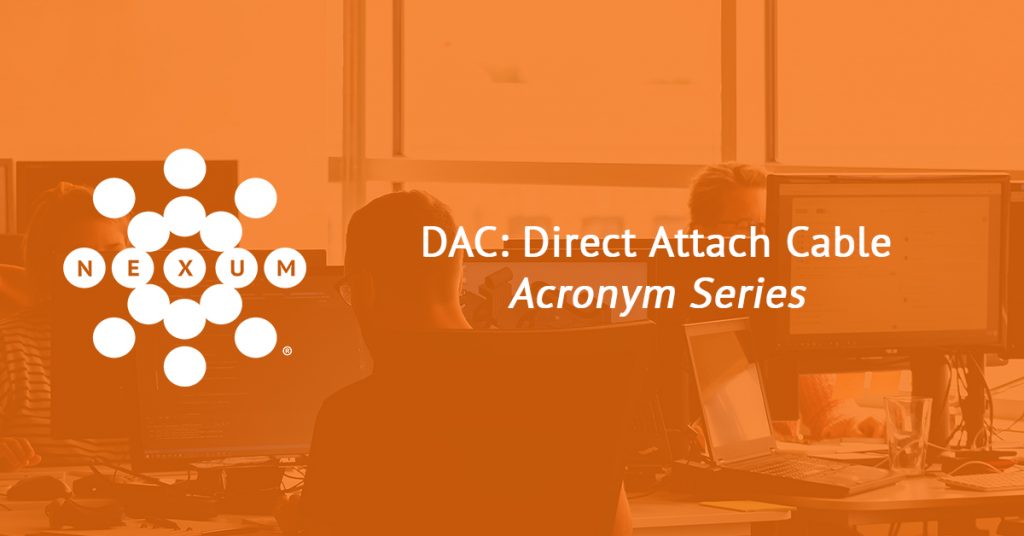
DAC: Direct Attach Cable
Acronym Series

Written by: Scott Hammond, Senior Security Engineer
Connect with Scott on LinkedIn
In our Acronym Series, Nexum’s expert engineers define the industry’s most popular topics.
Acronym: DAC – Direct Attach Cable
Definition: DACs are a low-cost, high-speed connection option for short distances meant to replace optical modules.
Explanation:
For all our love of wireless, we still must physically plumb hardware devices for connectivity to a network. Traditionally that is done via fiber for long distances and copper for shorter requirements. Optical transceivers tend to be expensive, but copper is much more cost-effective. DACs comprise a copper twinaxial wire of varying lengths that terminates at a modular transceiver on each end.
It was only recently that 10GBase-T ports became commonplace. DACs have helped leverage modular ports for speeds up to 40G/100G /400G (and likely will be beyond that in the not-too-distant future).
There are two available types: Passive DACs and Active DACs. Passive DACs support lengths of .5 to 5 meters, while Active DACs support 5-10 meters. If you need something beyond that, it’s time to buy some optics. Active optical cables (AOCs) are similar to DACs in that they are prefabricated to length and share the cost advantage over traditional optical modules.
The modules used in DACs are known as small form-factor pluggable (SFP) and quad small form-factor pluggable (QSFP).
We see DACs in use wherever you find physical hardware requiring a high-speed connection. High Availability between devices would be a prime example of where one might expect to find a DAC in play.
Check Out More Resources

Juniper EX4000
Nexum’s, Allyn Crowe, breaks down what sets the latest EX4000 series switch apart—powerful PoE, multigig support for next-gen Wi-Fi, and faster performance. With quick boot times and seamless upgrades, it’s a smart choice for future-proofing networks.

Juniper Announces Wi-Fi 7 Access Points
Nexum’s engineering team highlights Juniper’s new Wi-Fi 7 AP47 as a game-changer, offering faster speeds, quad radios, and enhanced IoT capabilities. With dual 10Gbps interfaces and AI-driven Wi-Fi 7 support, these access points are designed for cutting-edge network performance.

AI-Native Now
Join Juniper Networks on June 5th for a LinkedIn Live exclusive discussion on “Leveraging AIOps for Maximum Impact.”

